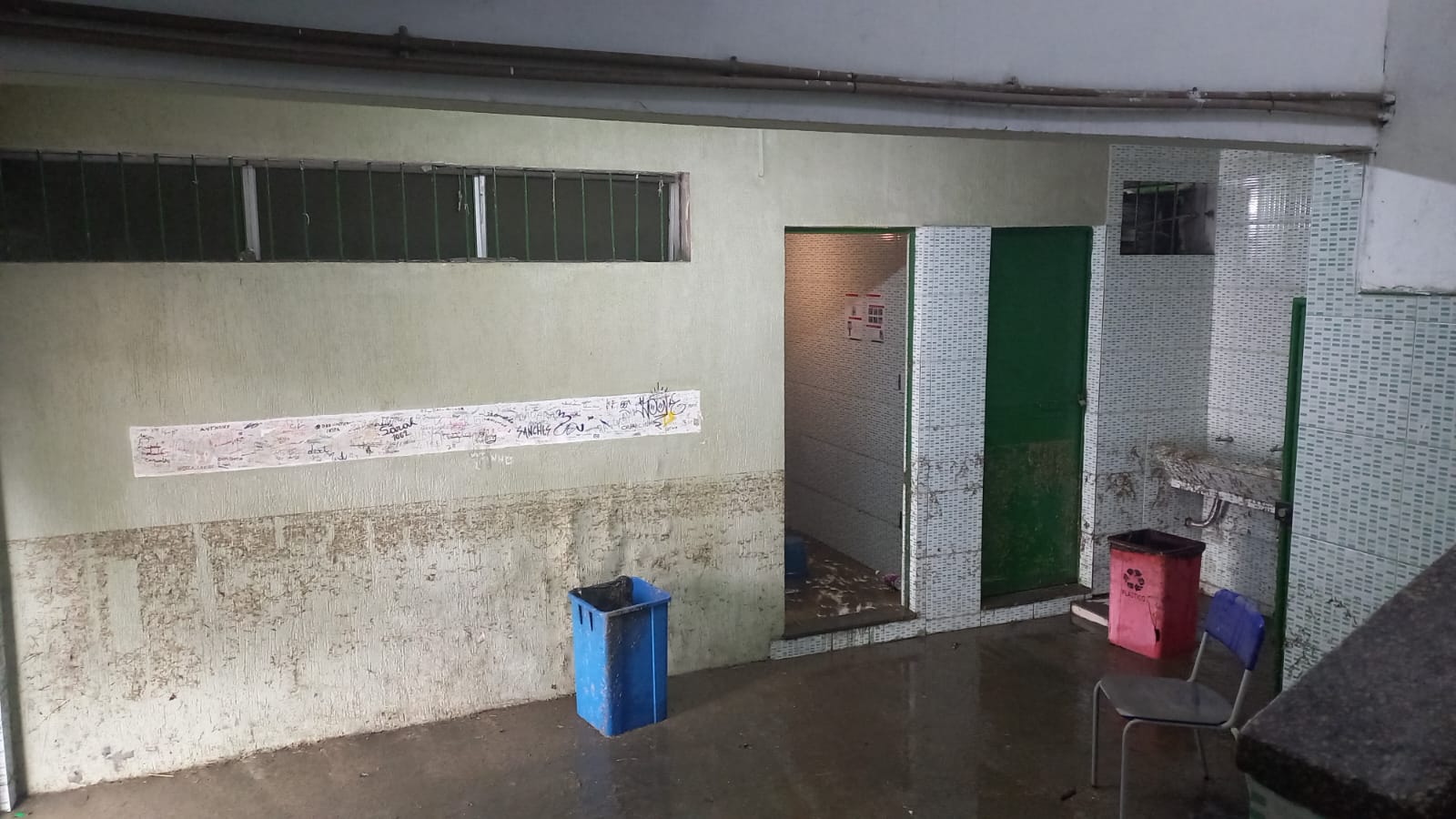
Clique aqui para Português

This is our latest article in a series created in partnership with the Behner Stiefel Center for Brazilian Studies at San Diego State University, to produce articles for the Digital Brazil Project on water issues and the LGBTQIAP+ population in Rio’s favelas and in the Baixada Fluminense for RioOnWatch.
In the week between February 7 and 13, the Pandiá Calógeras State School in the Alcântara neighborhood of São Gonçalo in the Greater Rio metropolitan region flooded three times due to heavy rainfall. On Tuesday, February 7, the ground floor was completely submerged causing significant losses to the school. The building was once again flooded during the storm on Saturday, February 11, as a neighboring stream overflowed and tore down a wall separating it from the school. As a result, the school has been indefinitely shut down by the Civil Defense, according to the State Education Secretariat (Seeduc) in a statement issued in response to a request for this article. Two days later, the storm on Monday, February 13 meant São Gonçalo was hit by an extreme weather event for a third time, facing yet again the consequences of the lack of infrastructure and preparedness to handle such weather conditions. Once again, the Pandiá Calógeras school flooded.
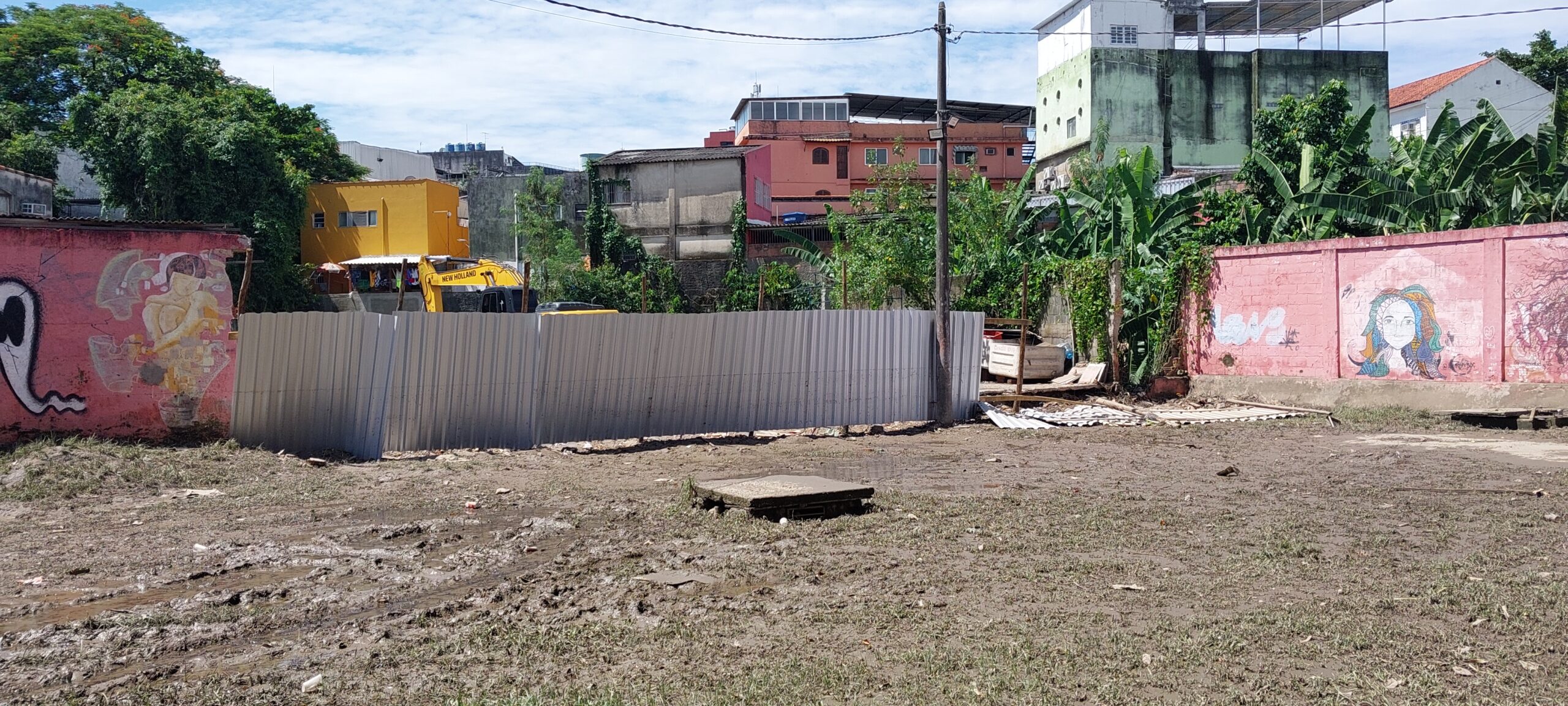
The academic year for the Pandiá Calógeras State School’s students was originally scheduled to begin on February 6, in line with the State Education Network’s calendar. However, due to the trail of destruction left in the school after February 7, it became impossible to resume classes on the week of February 6. Despite the concerted efforts of school employees and Seeduc, who provided emergency assistance and carried out thorough cleaning, classes could not resume the following Monday as anticipated due to heavy rainfall on February 11 and 13. As a result, there’s currently no forecast for when the school’s academic year can begin.
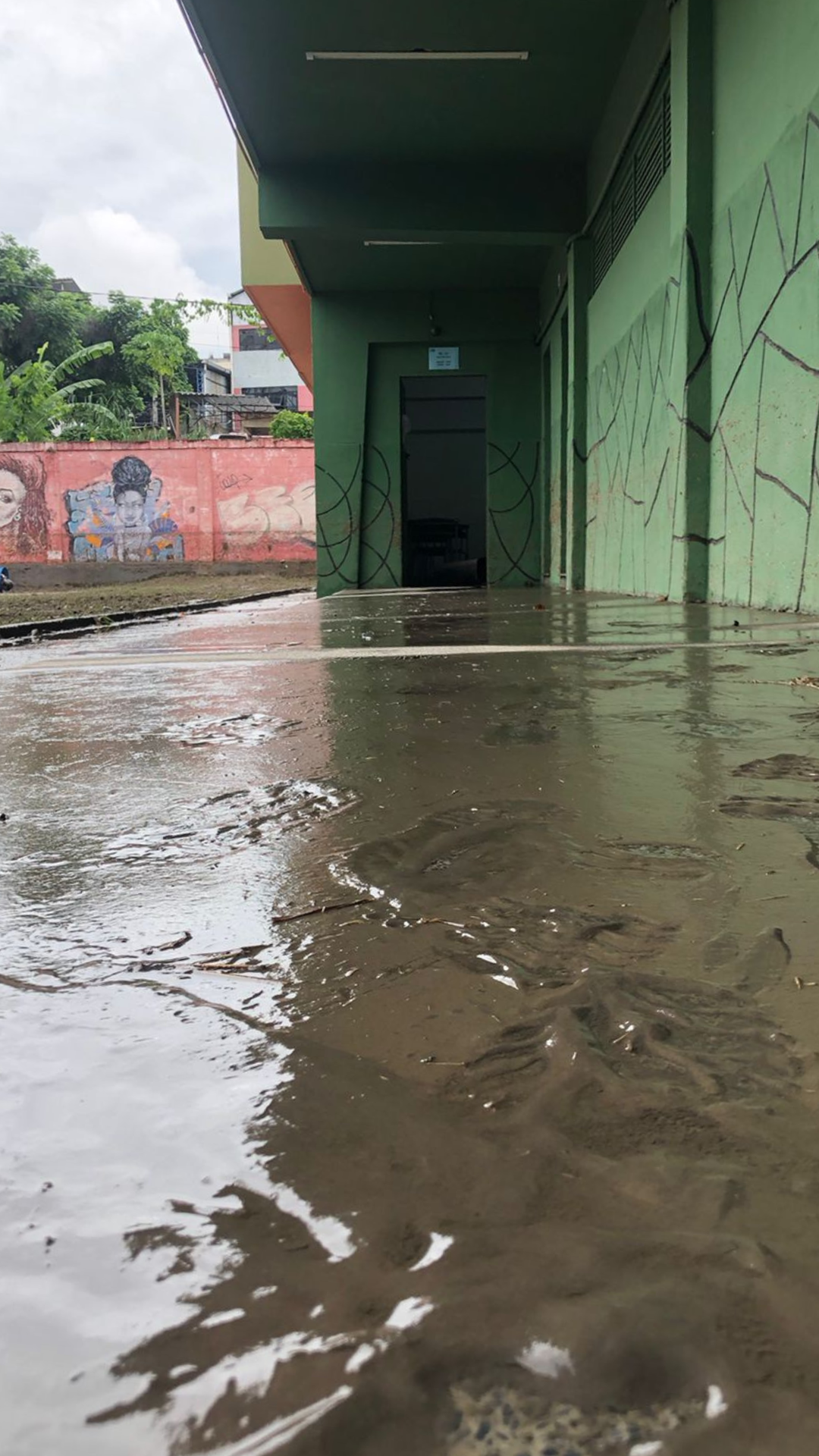
During the storm on Tuesday, February 7—which hit the entire Metropolitan Region—São Gonçalo recorded the greatest amount of rainfall in the state of Rio: 199mm in 24 hours, 44mm in Alcântara alone where the school’s located. Due to the substantial amount of rainfall and government neglect, the stream adjacent to Pandiá Calógeras State School overflowed, resulting in the ground floor of the school being completely submerged and causing thousands of reais worth of school supplies to be lost. The storm was so severe that it triggered nine landslide warning sirens in São Gonçalo, in the neighborhoods of Arsenal, Barro Vermelho, Covanca, Engenho Pequeno, Nova Grécia, Novo México, Sete Pontes, Tenente Jardim, and Venda da Cruz.
On Saturday night, February 11, both the city and the school were once again flooded. Only this time, the rain that fell in the school region was even more intense: in Alcântara alone, it rained 88mm. As a result, the water level at the school was higher on February 11 compared to February 7, and the ground floor was almost entirely submerged, as evident from the security camera footage of the school. During this flood, the Pandiá Calógeras State School’s wall collapsed, leading to the closure of the building.
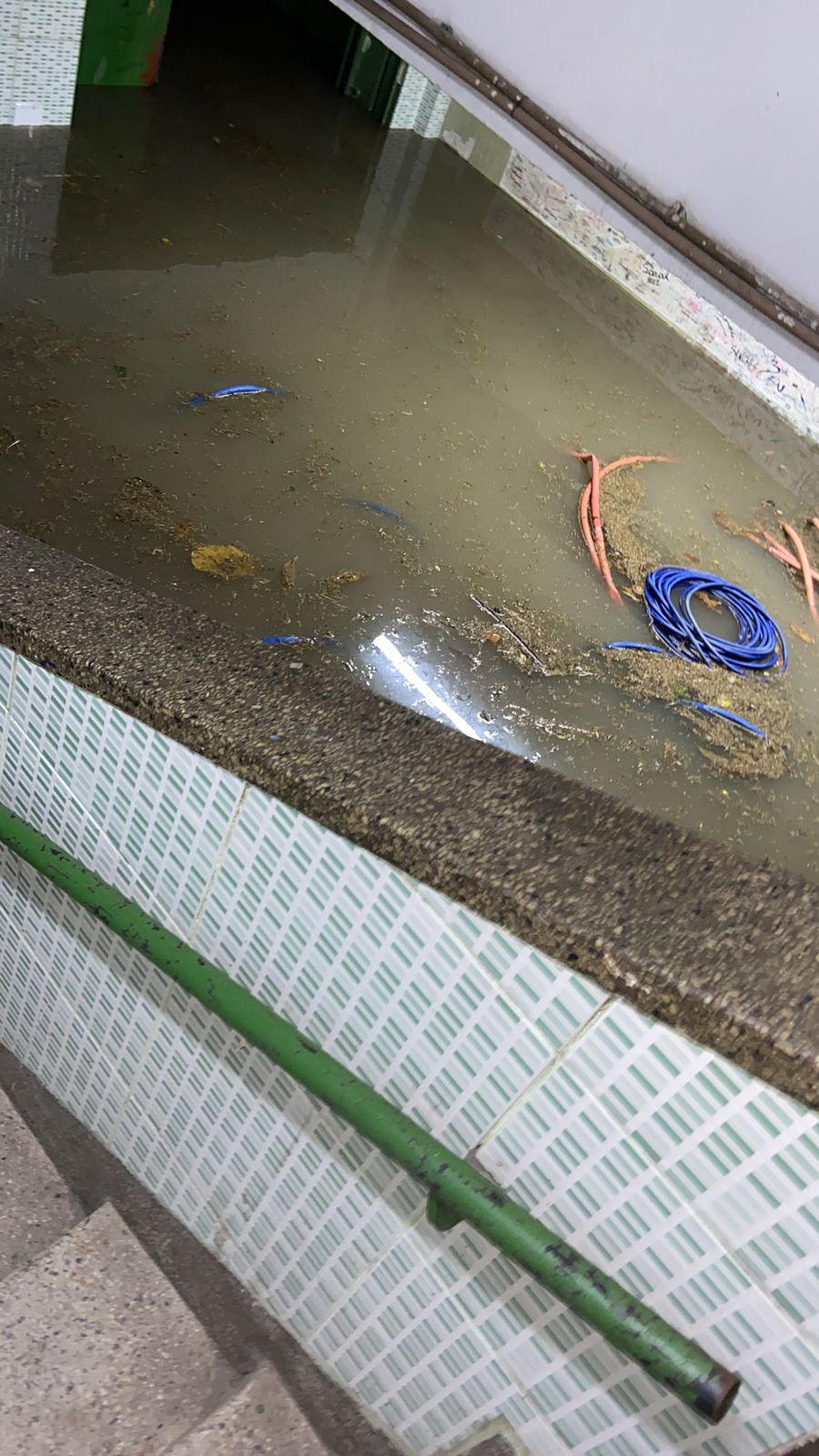
On February 13, two days after Pandiá’s second flood, São Gonçalo experienced its most intense rains of the week according to the Municipal Civil Defense, with 200mm of rainfall. Closed due to previous rains, the school in Alcântara once again flooded. Throughout the city, there were floods and landslides. In the Engenho Pequeno neighborhood, a woman died buried and three people from the same family went missing, possibly trapped under the rubble of their own house, which collapsed due to a landslide. After three days of searching, on Thursday, February 16, suspicions were confirmed: the bodies of the father, mother and daughter were recovered from the ruins of the family home by firefighters. As a result of the negligence of authorities and the rain of Monday, February 13, four people lost their lives in São Gonçalo.
Floods are common in the Greater Rio metropolitan area and expose the lack of infrastructure and government action. In the specific case of São Gonçalo—which has the second largest population in the state and is 55% Black, according to the latest Brazilian Institute of Geography and Statistics (IBGE) census—almost two million people could be affected by the neglect from the authorities. Furthermore, São Gonçalo has one of the largest GDPs in the state and collects substantial amounts in taxes, which should be invested in the well-being of the population, but unfortunately, this has not been the case.
Students Fight for Education and Climate Justice
Unwilling to accept what’s happened to the school where they studied, former students have organized to expose the situation. According to them, 2,000 young students from favelas and peripheral areas of Alcântara are directly impacted. The group is striving to drive political engagement and raise public attention to those who study in São Gonçalo during the rainy season.
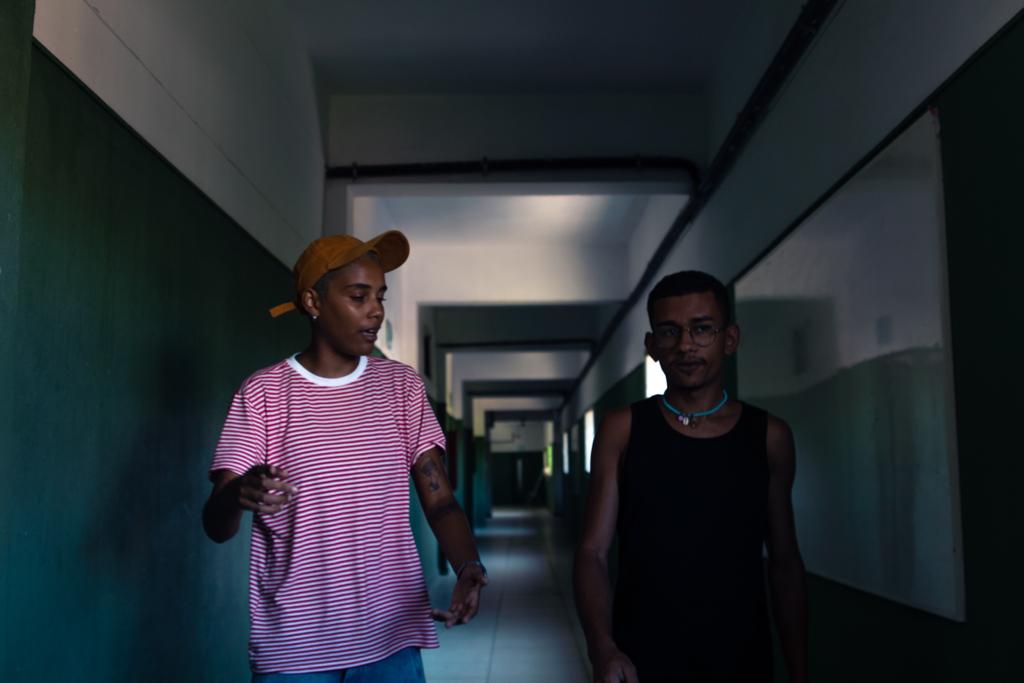
Former students Jhuly Anne Valério, 22, and Christian Ferreira, 24, recalled a major flood that affected their student lives in 2016. When they saw the same situation repeating itself seven years later, they were angry that the government had not yet solved the problem. The pain of seeing their school submerged in sewage and rainwater, coupled with the impact of missed classes, compelled them to take action. Valério and Ferreira visited the school on Wednesday, February 8, the day after the first flood, to see the damage and try to help school staff.
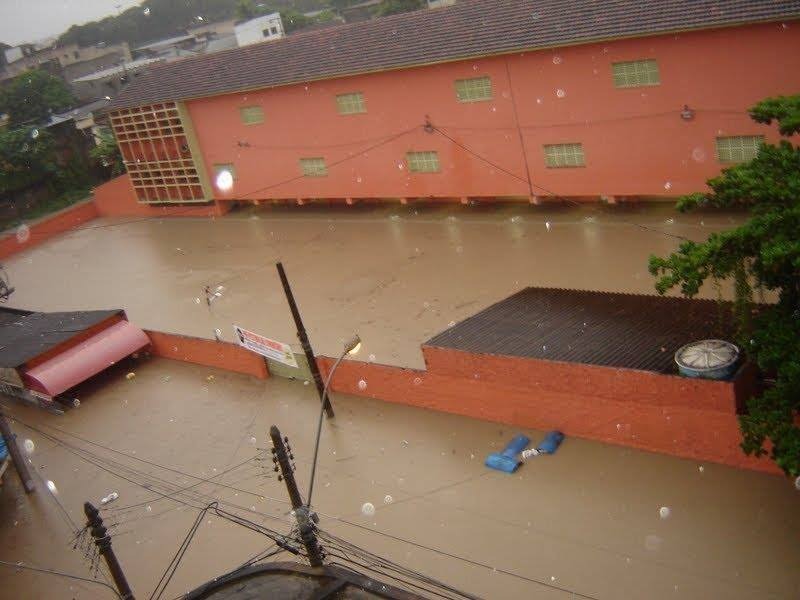
For them, this geological, climate, and human tragedy is an example of environmental racism in the city of São Gonçalo. Valério considers the situation: “Dismal! Unfortunately, the situation has repeated itself seven years later. Now, however, with the newly renovated school. The situation is very chaotic.” The duo made a video to show how the school looked the next day and shared it on social media.
View this post on Instagram
The heavy rain that hit the Metropolitan Region of Rio flooded C.E. Pandiá Calógeras in São Gonçalo, which was covered in mud and sewage. This is not the first time this has happened, causing problems for students who were left without classes. There is more rain forecast for the city! We are making suggestions to public agencies to think of ways to prevent this type of calamity from happening again. This is not normal.
Valério and Ferreira, both alumni, were preparing to launch the year’s activities for their organization, SUM, which derives from the Latin word “sum,” meaning “belonging.” Their aim is to address the issue of inadequate infrastructure in the city and propose solutions to combat social, racial, and climate inequality in the municipality. Valério is currently a history teacher and intended to start SUM’s activities at Pandiá the following week, which had to be postponed after the damage caused by the flood. With the cleaning task force that followed, SUM’s activities were rescheduled for Monday 13, with the assumption that classes would resume. However, the plan was once again thwarted due to the rains on February 11 and 13.
According to Valério and Ferreira, SUM’s central idea is to bring students closer to their school. The main objectives of the initiative are to encourage students to think about activities they would like to see developed at school, in the neighborhood, and in the city, in addition to promoting a debate on popular participation in the São Gonçalo government, mainly on environmental and climate issues, which affect the lives of millions of citizens and cause deaths every year. The episodes of environmental racism suffered by the students of the Pandiá Calógeras State School served as a catalyst for the struggle and ignited in the students a desire for change.
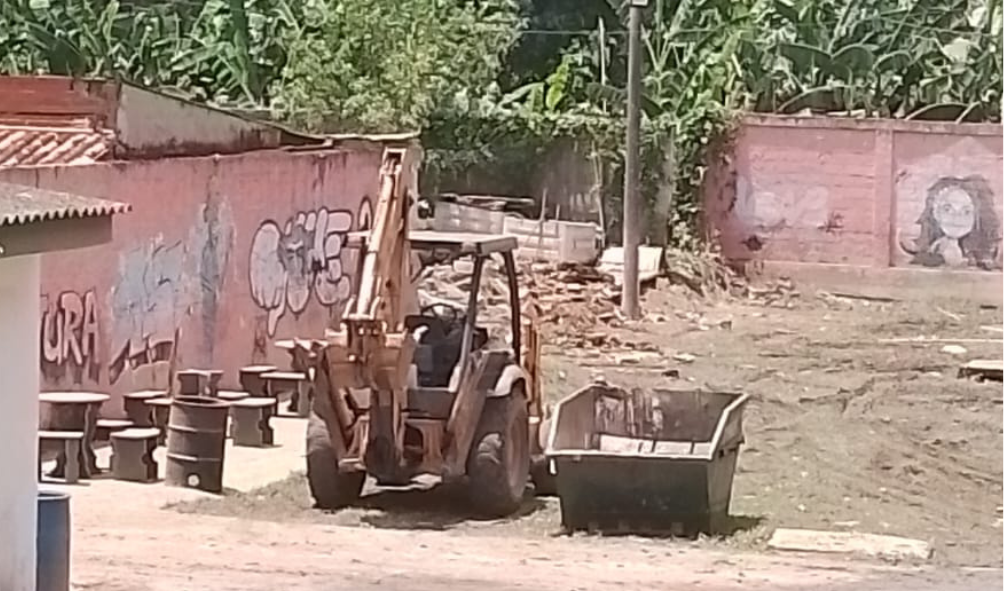
Damage to Public Property and Risk to Students’ Health
The school management team was taken aback by the extent of the damage caused by the floods in February, and it is anticipated that classes will remain suspended until after the carnival break. According to the school principal, Celinha Coelho, the initial estimate of the school’s material losses after the February 7 flood was R$50,000 (approximately US$10,000). However, given the additional damage wrought by the rains on February 11 and 13, new calculations will need to be made to determine the full extent of the losses.
“We’ve lost a considerable amount of supplies that were on the first shelf of the pantry because the water rose to around a meter and a half. We lost a stove, refrigerator, three freezers, a scale, an industrial blender… a lot of stationery from the art room, which we recently renovated.”— Celinha Coelho
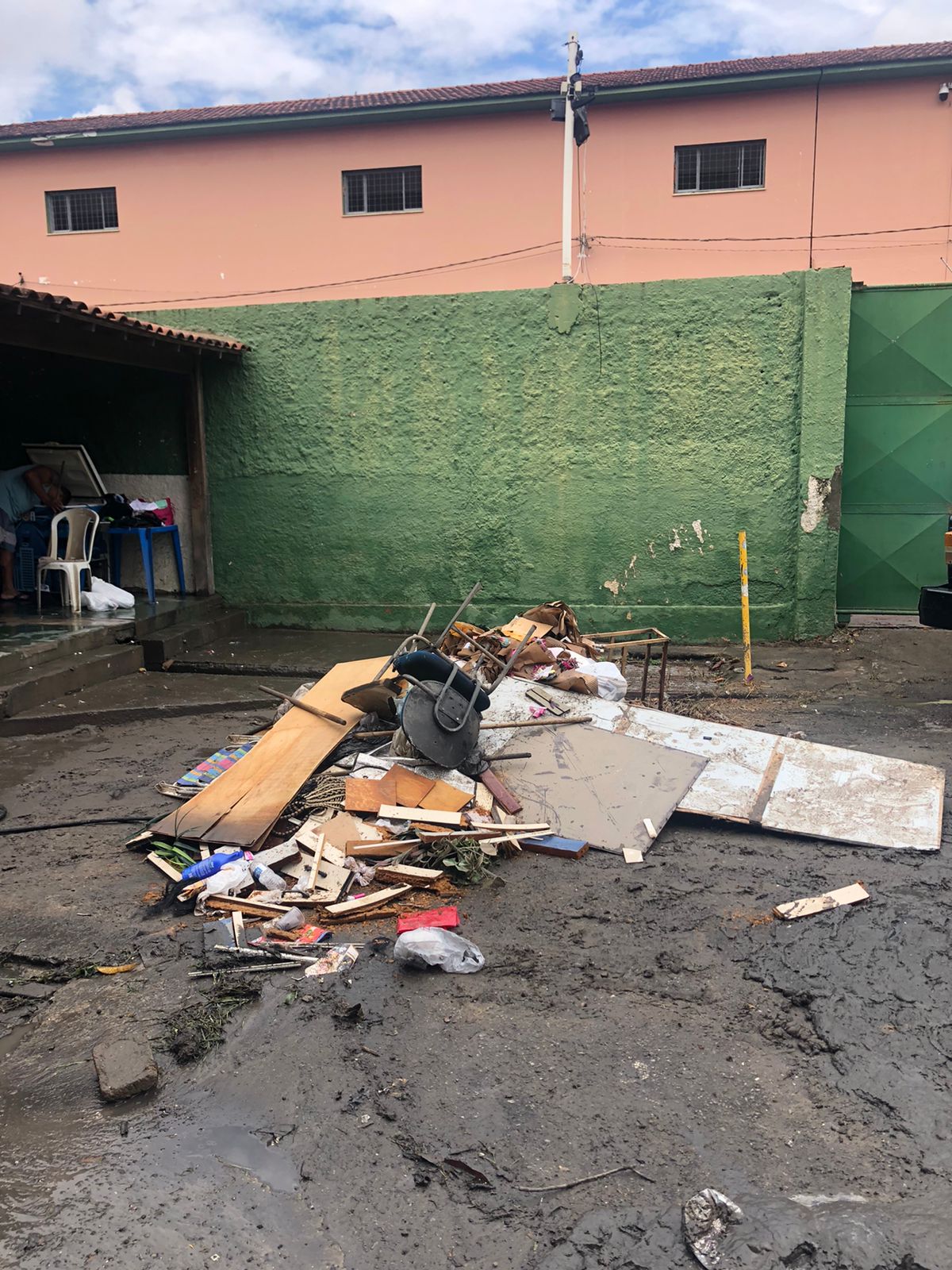
School staff described the damages from February 7: “The worst thing of all was the kitchen. A lot of food has been lost. The freezers were all upside down. The rooms were filled with mud and some [still had] standing water,” described João dos Santos*. At the time, the water tank was contaminated, and required a specialized cleaning service. Since the water supply had not yet been restored, water trucks were brought in to provide clean water for the school’s cleaning needs and for staff to drink. The cost of the cleaning services for the cistern and water trucks has not been disclosed by Seeduc. The damage caused by the flood will require everything to be redone and the overall cost of the damage will need to be recalculated.
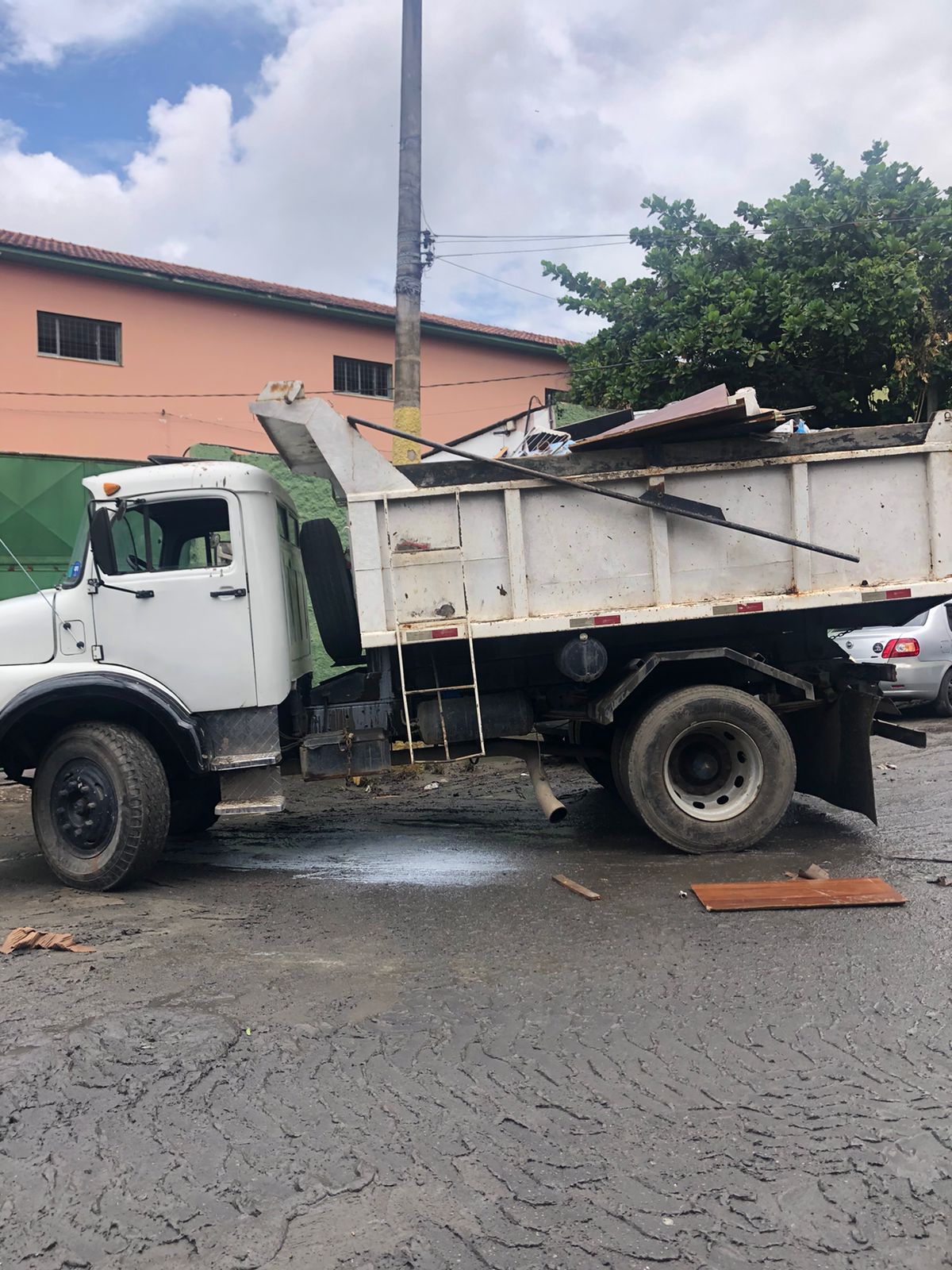
A Chronic Problem and Lack of Government Interest
The recurring issue highlights the urgent need for the city government to prioritize infrastructure improvements. However, according to São Gonçalo Councilor Romário Régis, this has not been a priority for the current municipal administration.
“Unfortunately, neither the city nor the state government considers it a priority. You can’t look at a flooded school and think this is normal. Schools should be a priority for everyone’s well-being.” — Romário Régis
The neighborhood of Alcântara, where the school is located, is also an important commercial point in São Gonçalo. Street commerce there is thriving, with hundreds of people shopping there every day. The neighborhood also has a bus terminal and an intense flow of traffic. Even so, the city does not seem interested in preventing flooding in the region:
“The Pandiá, as well as the region in which Pandiá is located, is a highly sensitive region and also very important for the economy of São Gonçalo… Every time it rains a little harder, the same thing happens. In other words, if we already know that this region is impacted by rainfall and flooding, we should dedicate enough time to solve these problems, with robust infrastructure investments. The neglect is so great that the city was the last in the Metropolitan Region to officially warn of the risk of flooding [on February 7], when several neighborhoods were already suffering the impact of rain. The City of Rio notified at 3pm, Niterói at 4pm and Maricá at 7pm. São Gonçalo only raised the alarm at 11pm.” — Romário Régis
Government Blame Game and School Flooding Demonstrate Environmental Racism
Minister of Racial Equality Anielle Franco, who was born and raised in the favelas of Complexo da Maré, said in a statement for this report that the incident at the state school in São Gonçalo alongside others is “without a shadow of a doubt” a case of environmental racism.
“Without a shadow of a doubt, the tragedies caused by the rains in Rio de Janeiro and other locations show environmental racism. This expression speaks of the racial discrimination present, for example, in determining the places where Black and poor people live—often more exposed to risks due to lack of infrastructure, basic sanitation, or because they live in places more prone to flooding, landslides, for example. When so-called natural tragedies occur, we can observe that where white people live, the effects of nature do not impact in the same way as in places where most residents are Black. This is environmental racism.” — Anielle Franco
According to Councilor Régis, the city government fails to address both the debate on environmental racism and the measures to mitigate the impacts of climate change.
“If they don’t even do the bare minimum of at least alerting the population, imagine the more complex discussions which impact the life of our city? Unfortunately, we don’t see [this debate] taken up by the City and it also does not seem to me that they are concerned about climate issues or inequalities, as is the case with environmental racism.” — Romário Régis
The State Education Secretariat also reported that, in 2016, it arranged for the school wall to be raised to try to prevent the stream passing by the building from overflowing into the school. However, it maintains that it is up to the State Environment Institute (INEA) and the São Gonçalo City Government to answer to the maintenance of rivers and streams. The City of São Gonçalo communications team reported that “the school is the state’s responsibility and that the cleaning of the river is INEA’s.” At the time of publication, the City of São Gonçalo had not disclosed if there is a plan to implement infrastructure works to prevent new floods and landslides in the city.
Seeduc’s Statement for this Report:
“The State Education Secretariat informs that, due to the heavy rain that hit São Gonçalo this Saturday (11/02), the Civil Defense of this municipality closed, on this date (12/02), the Pandiá Calógeras State School in Jardim Alcântara for inspection, technical evaluation, and reporting.
Seeduc also informs that it is actively engaged in ongoing negotiations with the municipality of São Gonçalo aiming to resolve the issue, considering that it is a question of rainwater drainage, which falls within the municipality’s jurisdiction.
Seeduc’s technical team carried out an inspection of the property on Monday (13/02).”
*Pseudonyms have been used to protect the privacy and safety of interviewees.
About the author: Amanda Ares is a journalist, graduate of the Fluminense Federal University (UFF), and has been covering cities since 2020 at A Seguir: Niterói. She lives in Fonseca and, between 2020 and 2021, worked on the Jovens Comunicadores project at BemTV, helping to combat misinformation about Covid-19 in the Rio Metropolitan Region. She is part of the NGO SUM, which aims to discuss and prevent the impacts of climate change in São Gonçalo. She is also a photographer and filmmaker.
